|
Books Should Be Free Loyal Books Free Public Domain Audiobooks & eBook Downloads |
|
|
Books Should Be Free Loyal Books Free Public Domain Audiobooks & eBook Downloads |
|
Fiction |
|---|
|
Book type:
Sort by:
View by:
|
By: George Alfred Henty (1832-1902) | |
|---|---|
 Under Drake's Flag: A Tale Of The Spanish Main
Under Drake's Flag: A Tale Of The Spanish Main
An exciting tale set on the high seas, in a period ruled by exploration, with the ever-present dangers of nature and the weather, together with pirates of the famed Spanish Main. | |
 Bonnie Prince Charlie: a Tale of Fontenoy and Culloden
Bonnie Prince Charlie: a Tale of Fontenoy and Culloden
This is a tale of the son of a Scottish officer, who gets arrested for helping a Jacobite agent. Set during the Jacobite rebellion in Scotland in 1755, the boy escapes and makes it to France and shares some adventures with Prince Charlie. | |
 Colonel Thorndyke's Secret
Colonel Thorndyke's Secret
Intrigue, murder, highwaymen... A British soldier serving in India has stolen a diamond bracelet from a Hindu idol. The bracelet comes into the possession of Colonel Thorndyke, who is subsequently sent home to England, where he dies of wounds received and bequeaths the bracelet to his relatives, having told his brother about it, but not its location. Meanwhile, the theft has caused a stir in India, and the Hindu faithful regard it as their religious duty to reclaim the jewel at any cost. Also published under the title: "The Brahmin's Treasure". | |
 Captain Bayley's Heir: A Tale of the Gold Fields of California
Captain Bayley's Heir: A Tale of the Gold Fields of California
When young Frank is falsely accused of a crime, he leaves England to seek adventure in America. He joins a wagon train heading west to the California gold fields, but as he is soon to find out, the West is more than just adventure! Braving Indians, wolves, and other dangers, Frank is determined to strike it rich - and perhaps someday clear his name and return home. | |
 Curse of Carne's Hold
Curse of Carne's Hold
When Ronald Mervyn from Devonshire is falsely accused of murder he emigrates to South Africa. He takes part in the Kaffir war and during this time he rescues a family from death. The family then return to England and try to establish Ronald's innocence. | |
By: George B. Grinnell | |
|---|---|
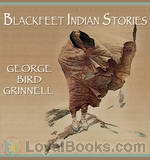 Blackfeet Indian Stories
Blackfeet Indian Stories
The Blackfeet were hunters, travelling from place to place on foot. They used implements of stone, wood, or bone, wore clothing made of skins, and lived in tents covered by hides. Dogs, their only tame animals, were used as beasts of burden to carry small packs and drag light loads. The stories here told come down to us from very ancient times. Grandfathers have told them to their grandchildren, and these again to their grandchildren, and so from mouth to mouth, through many generations, they have reached our time. (Sibella Denton) | |
By: George Barr McCutcheon (1866-1928) | |
|---|---|
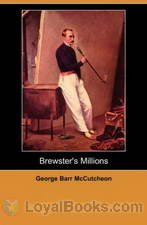 Brewster's Millions
Brewster's Millions
He hosts an all expenses paid luxury cruise to Europe for fifty guests and showers them with expensive gifts. When he's mugged in a dark alley, he insists that the thugs also take the $300 stashed away in his back pocket. He flies into a rage whenever one of his employees suggests cutting costs. Every time he places a bet, he wins, causing him even more despair! In Brewster's Millions by George Barr McCutcheon, a classic riches-to-rags tale, Montgomery Brewster is bound by the terms of an eccentric uncle's will to spend one million dollars completely within a year so that he can lay claim to an even bigger fortune... | |
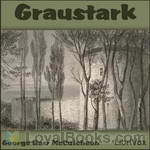 Graustark
Graustark
The Graustark novels are stories of court intrigue, royal disguise, and romance similar to Anthony Hope’s 1894 novel, The Prisoner of Zenda, and its sequels. They were popular best-sellers at the time they were published and the original editions are still readily available in used book shops. The novels gave their name to a fictional genre called Graustarkian: this genre contains tales of romance and intrigue usually featuring titled characters in small, fictional, Central European countries... | |
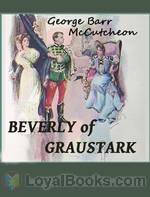 Beverly Of Graustark
Beverly Of Graustark
Beverly Of Graustark is the second book in the Graustark series. Lorry and his wife, the princess, made their home in Washington, but spent a few months of each year in Edelweiss. During the periods spent in Washington and in travel, her affairs in Graustark were in the hands of a capable, austere old diplomat–her uncle, Count Caspar Halfont. Princess Volga reigned as regent over the principality of Axphain. To the south lay the principality of Dawsbergen, ruled by young Prince Dantan, whose half brother, the deposed Prince Gabriel, had been for two years a prisoner in Graustark, the convicted assassin of Prince Lorenz, of Axphain, one time suitor for the hand of Yetive... | |
By: George Bernard Shaw (1856-1950) | |
|---|---|
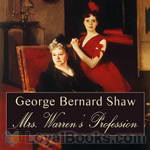 Mrs. Warren's Profession
Mrs. Warren's Profession
The story centers on the relationship between Mrs Kitty Warren, a rich woman, described by the author as "on the whole, a genial and fairly presentable old blackguard of a woman" and her daughter, Vivie. Mrs Warren is a middle-aged woman whose Cambridge-educated daughter, Vivie, is horrified to discover the morally questionable way her mother acquired her fortune. | |
 Don Juan in Hell
Don Juan in Hell
Don Juan in Hell is an excerpt (Act 3, Scene 2) from George Bernard Shaw’s Man and Superman. It is often performed as a stand-alone play. In it, three characters from Mozart’s Don Giovanni (Don Juan, Dona Ana, and the statue of the Commendatore, Dona Ana’s father) meet in Hell and, joined by the Devil, have a philosophical debate on a variety of subjects, including Heaven and Hell, men, women and marriage. In the end, they all decide where they will spend eternity. | |
 Love Among the Artists
Love Among the Artists
Love Among the Artists was published in the United States in 1900 and in England in 1914, but it was written in 1881. In the ambience of chit-chat and frivolity among members of Victorian polite society a youthful Shaw describes his views on the arts, romantic love and the practicalities of matrimony. Dilettantes, he thinks, can love and settle down to marriage, but artists with real genius are too consumed by their work to fit that pattern. The dominant figure in the novel is Owen Jack, a musical genius, somewhat mad and quite bereft of social graces... | |
By: George du Maurier (1834-1896) | |
|---|---|
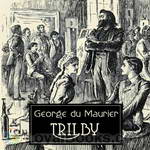 Trilby
Trilby
Trilby, published in 1894, fits into the gothic horror genre which was undergoing a revival during the Fin de siècle and is one of the most popular novels of its time, perhaps the second best selling novel of the Fin de siècle period after Bram Stoker’s Dracula. The story of the poor artist’s model Trilby O’Ferrall, transformed into a diva under the spell of the evil musical genius Svengali, created a sensation. Soap, songs, dances, toothpaste, and Trilby, Florida were all named for the heroine, and a variety of soft felt hat with an indented crown (worn in the London stage production of a dramatization of the novel) came to be called a trilby... | |
By: George Eggleston (1839-1911) | |
|---|---|
 Man of Honor
Man of Honor
New Yorker Robert Pagebrook travels to Virginia to visit relatives. The Civil War has ended and family ties are in order to be re-established. All goes well; the family relationships are as they should be, perhaps even better than expected. Unique character studies develop as Pagebrook finds himself in a financial predicament, becoming indebted and with no resources available, as his bank back home has dissolved. It is up to Robert Pagebrook to find a way to prove to his kin that he is still a Man of Honor. | |
By: George Eggleston and Dolores Marbourg | |
|---|---|
 Juggernaut: A Veiled Record
Juggernaut: A Veiled Record
Edgar Braine was consistently successful at all he set out to accomplish. He went through life with goals and worked diligently and with ethical purity in reaching those goals, from becoming editor of the local newspaper on up to his political aspirations. That was how his mother, in her waning years, had advised him to reach his goals, and Edgar was determined to honor her advice. There was one caveat in his mothers advice however, and it is for Edgar to determine exactly what she meant by it. Is success measured by the interactions between business, politics, and marriage? | |
By: George Eliot (1819-1880) | |
|---|---|
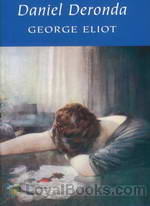 Daniel Deronda
Daniel Deronda
A lovely young woman gambling at a casino in Leubronn, Germany. A young man watches, fascinated from afar. She begins to lose heavily and leaves the casino. Thus opens the last and probably the most controversial of George Eliot's novels. Published in 1876, Daniel Deronda is also the only one in which the great Victorian novelist portrays contemporary society of her own time. There were only a few murmurs when it first came out, but later, they became a full fledged outpouring of resentment against what many readers felt was an extremely controversial stand on Jewish, proto-Zionist and Kabbalistic ideas... | |
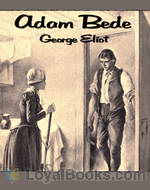 Adam Bede
Adam Bede
A young carpenter falls in love with the village beauty. She, however, has set her sights on a dashing army captain who's the son of the wealthy local squire. Meanwhile, a beautiful and virtuous young woman preacher arrives in the village. What happens to these people and the strange twists and turns that their lives take are described in the rest of the book. Adam Bede was George Eliot's first published novel. Published in 1859, the book has remained a firm favorite with readers and academicians alike and is still taught in many English literature courses all over the world... | |
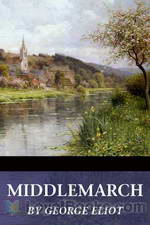 Middlemarch
Middlemarch
George Eliot's seventh and perhaps most famous novel almost didn't get written! It took birth as a short novella titled Miss Brooke but she was unhappy with its progress and finally in despair, she decided to put it aside for a couple of years. Meanwhile, personal problems intervened and when she took up the project again, it was with a renewed sense of creativity. Middlemarch: A Study of Provincial Life first appeared as an eight-part serial novel in 1871-72. In 1874, it was finally compiled into a full length novel and attained instant fame and success... | |
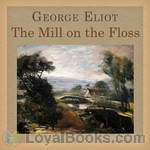 The Mill on the Floss
The Mill on the Floss
The novel details the lives of Tom and Maggie Tulliver, a brother and sister growing up on the river Floss near the village of St. Oggs, evidently in the 1820’s, after the Napoleonic Wars but prior to the first Reform Bill (1832). The novel spans a period of 10-15 years, from Tom and Maggie’s childhood up until their deaths in a flood on the Floss. The book is fictional autobiography in part, reflecting the disgrace that George Eliot (Mary Ann Evans) herself had while in a lengthy relationship with a married man, George Henry Lewes... | |
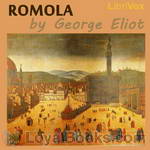 Romola
Romola
George Eliot's own favorite among her novels, this novel tells the story of Romola, the intelligent daughter of a blind scoller, who is falling in love with a man who is going to change her life and the politics of Florence in a way she doesn't like. Set in 15th century Florence, it is "a deep study of life in the city of Florence from an intellectual, artistic, religious, and social point of view". | |
 Scenes of Clerical Life
Scenes of Clerical Life
Scenes of Clerical Life, which appeared in book form in 1858 (after serial publication in the previous year), was the first published fiction by George Eliot, the pen name for Mary Anne Evans. It consists of three novellas based on the lives of country clergymen and their communities. These characters interest Eliot not for their theology — she had abandoned conventional Christian belief — but for their humanity. In these stories, we find the earliest signs of the narrative voice, the humanism, and the realism that would make George Eliot one of the greatest novelists of the 1800s. (Introduction by Bruce Pirie) | |
 Brother Jacob
Brother Jacob
Brother Jacob is a short story by George Eliot, in which she explores the relationship between the selfish, self-centered and ambitious David Faux and his idiot brother, Jacob. | |
 Felix Holt, The Radical
Felix Holt, The Radical
"Harold Transome is a landowner who goes against his family's political tradition (much to his mother's distress), while Felix Holt is a sincere radical. The setting of the book, the 1832 parliament election, is used to discuss the social problems of that time. A secondary plot involves Esther Lyon, the stepdaughter of a minister who is the real heiress to the Transome estate, with whom both Harold Transome and Felix Holt fall in love. Esther loves poor Felix Holt, but would she choose a comfortable life with Harold Transome?" | |
By: George Fenn (1831-1909) | |
|---|---|
 Young Robin Hood
Young Robin Hood
Ever wonder how Robin Hood became Robin Hood? Well, now you can read how a young boy was molded into the famous hero who "robbed from the rich and gave to the poor". This imaginative story gives zesty details into the development and growth of the famous Robin Hood | |
By: George Fullerton Evans (-1963) | |
|---|---|
 College Freshman's Don't Book
College Freshman's Don't Book
A short, humorous guide of what not to do in your first year of college. | |
By: George Gascoigne (1535-1577) | |
|---|---|
 Adventures of Master F.J.
Adventures of Master F.J.
This story presents through letters, poems and third-person commentary the love affair between a young man named Freeman Jones and a married woman named Elinor, lady of the castle he is visiting in Scotland. Events in the affair are traced from initial attraction through seduction to (somewhat) graphic sexual encounters and their aftermath. (Allegedly based on a real-life scandal, the author, in re-issuing his story two years later, transplanted the action to Italy, renaming the principals Fernando Jeronimi and Leonora.) | |
By: George Gibbs (1870-1942) | |
|---|---|
 Forbidden Way
Forbidden Way
...he went over to a cracked mirror in the corner and examined his face, grinning at his image and touching the red marks with his fingers. "That was a love-tap for fair," he said. "I reckon I deserved it. But she oughtn’t to push a man too far. She was sure angry. Won’t speak now for a while." He turned with a confident air. "She’ll come around, though," he laughed. "You just bet she will." (From chapter 1 of The Forbidden Way) | |
 Splendid Outcast
Splendid Outcast
_What else?_—What else had happened? Something to do with the remarkable likeness between himself and Harry? The likeness,—so strong that only their own mother had been able to tell them apart. Memory came to him with a rush. He remembered now what had happened in the darkness, what he had done. Taken Harry’s lieutenant’s uniform, giving the coward his own corporal’s outfit. Then he, Jim Horton, had gone on and carried out the Major’s orders, leaving the coward writhing in the ditch... | |
 Golden Bough
Golden Bough
The eyes of the Légionnaire, now grown accustomed to the glow of the light, made sure that the figure had not moved, nor was aware of his silent and furtive approach. Two plans of action suggested themselves, one to move behind the foliage to the right and intercept the monk with the lantern should he attempt to flee toward the lights of the house nearby, the other to risk all in a frank statement, a plea for charity and asylum. (A selection from Chapter 1. ) | |
By: George Gissing | |
|---|---|
 New Grub Street
New Grub Street
The story deals with the literary world that Gissing himself had experienced. Its title refers to the London street, Grub Street, which in the 18th century became synomynous with hack literature; as an institution, Grub Street itself no longer existed in Gissing’s time. Its two central characters are a sharply contrasted pair of writers:Edwin Reardon, a novelist of some talent but limited commercial prospects, and a shy, cerebral man; and Jasper Milvain, a young journalist, hard-working and capable of generosity, but cynical and unscrupulous about writing and its purpose in the modern (i.e. late Victorian) world. | |
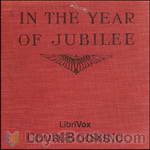 In the Year of Jubilee
In the Year of Jubilee
The Jubilee marks the fiftieth year of the reign of Queen Victoria. Dickensian in its sweeping scope of London life, Jubilee depicts the harsh and disreputable conditions of lower-middle class life at the end of the 19th century. (Introduction by S. Kovalchik) | |
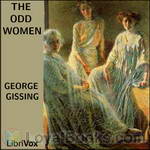 The Odd Women
The Odd Women
George Gissing's 1893 novel takes on the 19th century "Woman Question" by looking at themes of feminism, marriage, and love. The novel raises these issues through the lives of several contrasting women: Mary Barfoot, a feminist philanthropist who helps train women for careers; her close friend Rhoda Nunn, who believes marriage is a disastrous choice for women; and Monica Madden, who starts out as one of their protegees but chooses to marry a seemingly kind older man. As Monica experiences the challenges of married life, Rhoda finds herself drawn to Mary's cousin, the charming but apparently profligate Everard. | |
 Nether World
Nether World
This sad social novel revolves around the problematic issue of money. Michael returns from Australia to London a rich man. However, he hides this fact from everybody and spends money only on the things he really needs. He contemplates leaving his money to his granddaughter Jane, under the condition that she donate at least most of it to charity. However, Jane is not sure she can do it. This novel tells much about working class life in 19th century London. | |
 Unclassed
Unclassed
The Unclassed tells the story of two friends who are aspiring authors living in London in the late 19th century. Both of them fall in love. Both believe in social change but do not know how to bring it about. Both are sceptical about the values of their times. Both want respectability more then they would admit. This book, unlike many others of it's time, tells about working women, and includes honest descriptions of the slums of London. | |
 Demos: A Story of English Socialism
Demos: A Story of English Socialism
"Richard Mutimer is delighted to inherit a large fortune. As a socialist, he means to use it well: he will open a factory in which workers would be treated well, he will advance his party's causes through his own wealth... At least, so he thinks. But reality may be far different. This novel raises more questions than answers. How much should money play in the marriage market, or can love have a prominent place? Can a man who gained power remain a socialist? This book is not only about political unrest... | |
 Life's Morning
Life's Morning
This is the story of a poor young lady Emily Hood who while working as a governess falls in love with Wilfrid Athel the son of her employer. They become engaged, however things do not run smoothly after a visit home to her parents and Emily has to make a heartbreaking choice. | |
By: George Griffith (1857-1906) | |
|---|---|
 Angel of the Revolution
Angel of the Revolution
The Angel of the Revolution: A Tale of the Coming Terror (1893) is a science fiction novel by English writer George Griffith. It was his first published novel and remains his most famous work. It was first published in Pearson's Weekly and was prompted by the success of The Great War of 1892 in Black and White magazine, which was itself inspired by The Battle of Dorking. A lurid mix of Jules Verne's futuristic air warfare fantasies, the utopian visions of News from Nowhere and the future war invasion literature of Chesney and his imitators, it tells the tale of a group of terrorists who conquer the world through airship warfare... | |
By: George Grossmith (1847-1912) | |
|---|---|
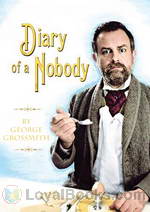 The Diary of a Nobody
The Diary of a Nobody
Grossmith’s comic novel unveils the daily chronicles of the pompous and clumsy middle-aged clerk Charles Pooter, who has just moved to the London suburb of Holloway with his wife Carrie. Nonetheless, the family’s fresh start is not quite what they had in mind. Set in the late Victorian era, the diary accurately documents the manners, customs, trends and experiences of the time. First appearing in Punch magazine through the years 1888-89, The Diary of a Nobody was first published in book form in 1892 and has entertained readers ever since... | |
By: George Horace Lorimer (1869-1937) | |
|---|---|
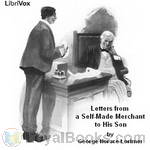 Letters from a Self-Made Merchant to His Son
Letters from a Self-Made Merchant to His Son
Being the Letters written by John Graham, Head of the House of Graham & Company, Pork-Packers in Chicago, familiarly known on 'Change as "Old Gorgon Graham," to his Son, Pierrepont, facetiously known to his intimates as "Piggy." George Horace Lorimer was an American journalist and author. He is best known as the editor of The Saturday Evening Post. | |
By: George Livermore | |
|---|---|
 Take it From Dad
Take it From Dad
Take It From Dad is a collection of letters written by a father to his son, Ted, at boarding school, away from home for the first time. In each letter "Dad" comments on some aspect of Ted's experience, attitude, or behavior, illustrating and driving home his point with an entertaining tale about human nature. This book is appropriate for all ages from adolescence on, and its lessons are as relevant today as when they were written. --Lee Smalley | |
By: George MacDonald (1824-1905) | |
|---|---|
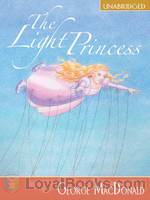 The Light Princess
The Light Princess
A king and queen are in despair. After years of marriage, they are yet to be blessed with a child. Finally a lovely daughter is born to them. They plan a grand christening ceremony for the baby, but as destiny would have it, they forget to invite the nastiest lady in the kingdom, who also happens to be the king's sister, the evil Princess Makemnoit. Now if all that seems distinctly familiar to you, it was meant to! Using the Sleeping Beauty/Briar Rose fairytale as a starting point, Scottish writer George MacDonald creates a story that's even more enchanting and gives it a nice little twist... | |
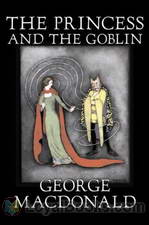 The Princess and the Goblin
The Princess and the Goblin
George MacDonald’s fairy stories and fantasy have inspired a number of writers including C.S. Lewis and J.R.R. Tolkien and of this popular fairy story, which as you might suspect concerns a little princess plotted against by a race of goblins, G.K. Chesterton said that it “made a difference to my whole existence.” | |
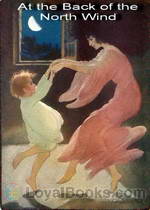 At the Back of the North Wind
At the Back of the North Wind
Written by the man who mentored Lewis Carroll and encouraged him to submit Alice for publication, At the Back of the North Wind is today a forgotten classic of Victorian children's literature. The story tells of a young boy named Diamond, the son of a coachman in an English country mansion. Diamond sleeps in the hayloft above the stables and at night he finds he's disturbed by the wind blowing through the holes in the wall. He tries to plug them but one night, he hears an imperious voice scolding him for doing this! It is the magnificent North Wind that speaks to him and tells him that he's closed up her windows... | |
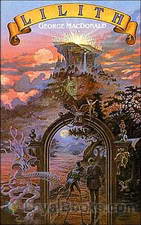 Lilith
Lilith
A fantasy novel first published in 1895, Lilith follows a young man on his inter-dimensional journey of spiritual discovery, as he acquaints himself with his family’s past and unearths a life-changing secret. Moreover, it deals with the introspection of its protagonist, as he is hurled into a mysterious setting where he encounters bizarre creatures that challenge the validity of his temporal values. Examining issues including the essence of life, wisdom, death, redemption, and salvation, the novel presents a masterfully woven plot that marks the piece as one of MacDonald’s darkest and most intense contributions to the fantasy genre... | |
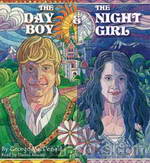 The Day Boy and the Night Girl
The Day Boy and the Night Girl
First appearing in Harper’s Young People as a serial, the piece focuses on the extraordinary tale of a young boy and a girl who have been brought up in a secluded and controlled environment by a wicked witch, incognizant of the world outside of their custom tailored settings. Enriched with magic, fantasy, romance, and allegory, The Day Boy and the Night Girl is a great instance of MacDonald’s excellent use of metaphors to express a deeper meaning to a seemingly simple fairy tale. The novel begins with the introduction of Watho, a wicked witch who has an insatiable thirst for knowledge... | |
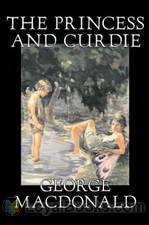 The Princess and Curdie
The Princess and Curdie
The Princess and Curdie is the sequel to The Princess and the Goblin by George MacDonald. It’s been a year since the Princess Irene and Curdie first met, and a year since the goblin incident and all appears to be going well in the Kingdom. Or is it? After a visit from Irene’s great-great-grandmother, Curdie finds himself on a mission to save the kingdom, with a rather strange companion in tow. | |
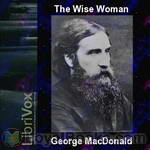 The Wise Woman
The Wise Woman
George MacDonald was an influential Scottish author, poet, and Christian minister. MacDonald’s works (particularly his fairy tales and fantasy novels) claimed the admiration of such authors as J. R. R. Tolkien, C. S. Lewis, and Madeleine L’Engle. The Wise Woman fairy tale was one of MacDonald’s more popular works. This delightful story describes how a woman of mysterious powers pays visits to two very different young girls: one a princess, the other a shepherd’s daughter. Neither girl is left unchanged by the startling events that are unleashed as a result: and the reader is confronted by astonishing fairy-worlds in which the girls are forced to choose between good and evil... | |
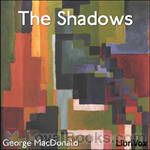 The Shadows
The Shadows
“Old Ralph Rinkelmann made his living by comic sketches, and all but lost it again by tragic poems. So he was just the man to be chosen king of the fairies…” George MacDonald (December 10, 1824 – September 18, 1905) was a Scottish author, poet, and Christian minister. Though no longer well known, his works (particularly his fairy tales and fantasy novels) have inspired admiration in such notables as W. H. Auden, J. R. R. Tolkien, and Madeleine L’Engle. The Shadows is one such fairy tale... | |
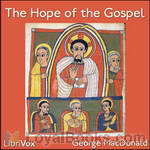 The Hope of the Gospel
The Hope of the Gospel
Perhaps most well-known for his fairytales and fantasy stories such as The Golden Key and Phantastes, or for his poetry, George MacDonald was a great spiritual master of the nineteenth century. He spent several years as a minister in his native Scotland; however he was forced to resign his position due to ill health. He had a profound influence on such later writers as G. K. Chesterton and C. S. Lewis – the latter of whom considered MacDonald to be his spiritual father, and edited an anthology of his works... | |
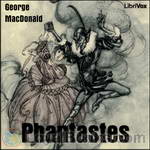 Phantastes
Phantastes
A young man named Anodos experiences dream-like adventures in Fairy Land, where he meets tree-spirits, endures the presence of the overwhelming shadow, journeys to the palace of the fairy queen, and searches for the spirit of the earth. The story conveys a profound sadness and a poignant longing for death. (Brad Powers) | |
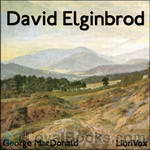 David Elginbrod
David Elginbrod
David Elginbrod was George Macdonald’s first real success, a novel of Scottish country life. Published in 1862, it was dedicated to the memory of Lady Noel Byron. | |
 The Light Princess & Other Fairy Tales
The Light Princess & Other Fairy Tales
George MacDonald claimed that he did not write for children, but for the child-like. Some of his longer works are clearly intended for adults, and this fantastic fiction influenced later writers such as G.K. Chesterton, J.R.R. Tolkien and C.S. Lewis. But you can find some of his best writing in the stories aimed squarely at children, and these are three of the finest.The Light Princess. A wicked aunt curses her baby niece so that gravity has no effect on her, and she floats through the air as if it were water... | |
 The Lost Princess (or A Double Story, or The Wise Woman)
The Lost Princess (or A Double Story, or The Wise Woman)
Also known as "A Double Story" or "The Wise Woman."The story of two very spoiled girls, a princess and a peasant, who are kidnapped by a strange woman for a lesson in life. They may not emerge the same... but will their parents be changed for the better too? | |
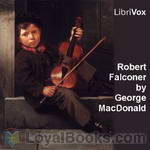 Robert Falconer
Robert Falconer
A Victorian novel devoted to beloved character first introduced to readers in MacDonald's David Elginbrod. | |
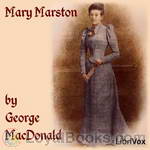 Mary Marston
Mary Marston
Written at the height of George MacDonald's literary career, the story centers around the life of a simple merchant's daughter. Mary Marston's unswerving commitment to love, God, and others is contrasted with a backdrop of an array of characters and a complex and sometimes mysterious plot. It is a story of a woman who loves a man, and teaches him to change. Not out of his love for her, but simply because it was the right thing to do. MacDonald allows the characters a range from delightful to devious. As such, they were intended to serve as models. His message is that all eventually must stand before God. | |
 St. George and St. Michael, Volume 1
St. George and St. Michael, Volume 1
’St. George and St. Michael’ is a little-known historical romance telling the story of a young couple who find themselves on opposing sides during the tumultuous years of the English Civil Wars.Tensions are rising between king and parliament; the Church of England and the numerous independent puritans and rumours abound that Charles I will soon declare open war on the dissident elements within his realm. Seventeen-year-old Dorothy Vaughan knows little of the brewing conflict, yet is sure that her loyalty must be with her king and her nation... | |
 The Cruel Painter
The Cruel Painter
This is the story of a daring college student's quest to win the icy heart of a beautiful girl. Unfortunately, the girl is the daughter of a cunning and sadistic master artist, who takes the student as an apprentice with the express intent of torturing the youth with his own hopeless love. The story is set in late 16 century Prague, amid mysterious happenings and the terrifying rumors of a vampire on the loose. | |
 Malcolm
Malcolm
Malcolm MacPhail has lived, for all of his twenty or so years, in a fishing village on the north coast of Scotland. He lives with his grandfather and, though he has never met his parents, has no curiosity about the details of his birth. However, others in the town have their own curiosity, and their own suspicions, about where this highland man and his infant grandson came from, those twenty or so years ago. When the local marquis and his daughter come to live in their grand estate just outside the town, unoccupied for many years, events begin to move which introduce to them the humble Malcolm, and which may shed some light on Malcolm's past while changing the course of his future. | |
By: George Manville Fenn (1831-1909) | |
|---|---|
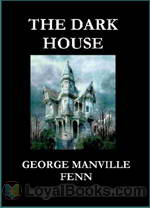 The Dark House
The Dark House
An extremely wealthy but reclusive man has died, leaving an eccentric will which hints at great riches hidden somewhere in the house. Most of the people at the reading of the will did not know the deceased in person, but had received kindnesses from him, for instance by the payment of school and university fees. The principal beneficiary, a great-nephew, also did not know him. The only two people who really knew him were the old lawyer who dealt with his affairs, and an old Indian servant. Yet when the will had been read, and they all went to where the treasure–gold, jewels and bank-notes–were supposed to be hidden, nothing could be found. | |
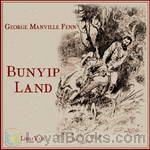 Bunyip Land
Bunyip Land
Joe Carstairs is a boy on a farm in Australia. His father is a keen naturalist who, some years before had set off for New Guinea in search of specimens, and never been heard of again. Joe is old enough to mount a search expedition, and takes with him a local doctor and an aboriginal worker on his farm. They find themselves joined by a stowaway, Jimmy, whose father is a squatter (farmer) nearby, together with his dog, Gyp.This team sets off, arrive in New Guinea, hire some more porters, and travel guided by some sixth sense straight to where Mr... | |